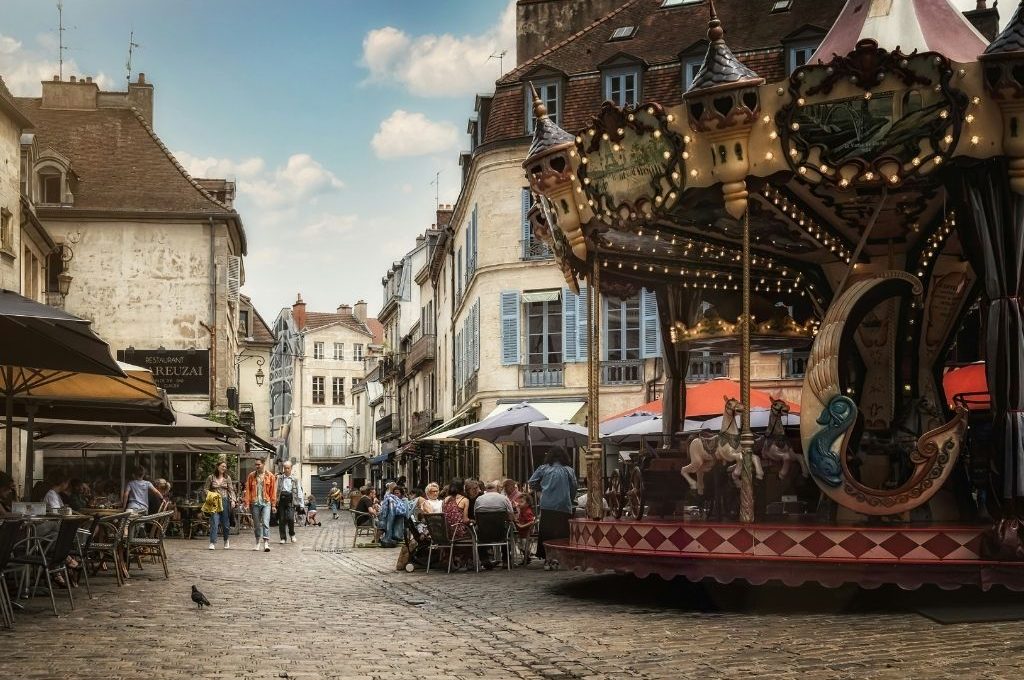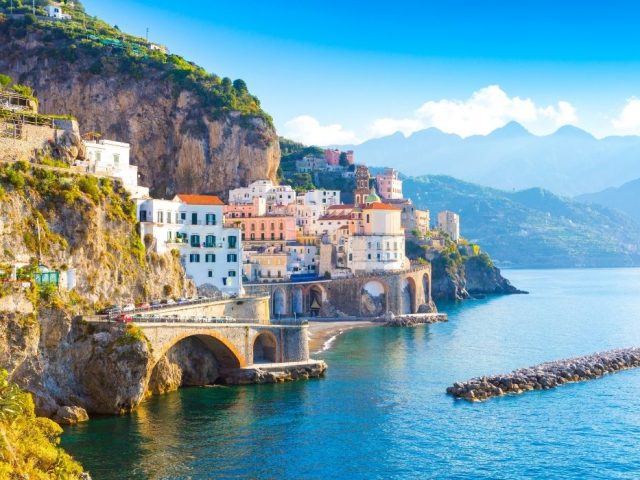The medieval architecture, narrow streets, colorful roofs, and majestic cathedrals are truly fascinating! Of course, it’s not the first city that comes to mind when you think of France, but some French folks say that Dijon is a must-see before Paris. They believe that France is truly a country you have to experience to understand, and that Dijon is a great place to start.
This city is a fantastic place to eat, especially for its delicious mustard and world-class Burgundy wines. It’s so compact that you can explore it all on foot, which is a great way to see the city! When you stroll through the city, you’ll see owl signs on the roads. These signs are there to help you find the best places to visit in the city.
Before starting the article, let’s remind you: Don’t forget to download the Piri Guide mobile app to explore Dijon step by step with your personal and digital tour guide!
Where is Dijon?
Nestled in the heart of the renowned Burgundy region in eastern France located approximately 310 kilometers (193 miles) southeast of Paris. Dijon lies at the confluence of the Ouche and Suzon rivers and situated at the foot of the Côte d’Or hills.
The city also serves as the capital of the Côte-d’Or department and the Burgundy wine region.
How to Get to Dijon?
Since Dijon doesn’t have its own airport one of the best way to get to the city is through train. The city is served by high-speed TGV trains, which provide a quick and comfortable journey from major French cities. If you’re traveling from Paris, you can hop on a TGV at Gare de Lyon and arrive in Dijon in just under two hours. There are also direct TGV services from other cities, such as Lyon, Marseille, and Lille. The main train station, Dijon Ville, is centrally located, making it easy to start exploring the city as soon as you arrive.
If you prefer the flexibility of driving, Dijon is easily accessible via France’s excellent road network. The city is situated near several major highways, including the A6, which connects Paris to Lyon, and the A31, which runs from Dijon to the northeast towards Nancy. Driving allows you to explore the picturesque Burgundy countryside at your own pace and visit nearby attractions and vineyards.
For budget-conscious travelers, long-distance buses are a great option. Companies like FlixBus and BlaBlaBus offer regular services to Dijon from various French and European cities.
Best Season to Visit Dijon?
Dijon is a year-round destination, each season offering its own unique charm and attractions. Especially spring is a delightful time to visit Dijon. As the city awakens from winter, you’ll enjoy mild temperatures, making it perfect for exploring Dijon. Spring is also the start of the wine season, so it’s an excellent time for wine enthusiasts to visit the nearby vineyards and participate in wine tastings.
Summer in Dijon is warm and lively. One of the highlights of summer is the International Gastronomy Fair in June, celebrating Dijon’s rich culinary heritage. However, be warned in summer Dijon can be packed with tourists as well.
Autumn is arguably the best time to visit Dijon, especially for wine lovers. The vineyards are in full harvest mode, and the countryside is adorned with stunning fall foliage. The famous Dijon International and Gastronomic Fair, held in November, is a must-visit, offering a fantastic opportunity to sample local delicacies and wines.
Winter in Dijon is quiet and cozy, The city takes on a magical atmosphere with its festive decorations and charming Christmas markets.
Places to Visit in Dijon
We’ve made a list of must-visit places in Dijon. Yet, we should remind you that you can find more on the Piri Guide mobile app. Piri Guide detects your location, offers you the best travel routes, and starts telling you the hidden stories of wherever you are. All you have to do is to get your headphones or earbuds and follow the path at your own pace. Then, don’t set out for your trip before downloading the digital travel guide! 😊
Palace of the Dukes
Palace of the Dukes holds almost all the history of Dijon. Although there have been additions and changes in every period, there is still a harmony and consistency throughout the building.
The dukes of Burgundy were big supporters of Burgundian wines, art, and gastronomy during the Middle Ages. The last duke, Charles IV, died in 1477 while trying to make his dream of a Burgundian kingdom come true, and the duchy went back to King Louis XI of France. The palace, though, became a symbol of the king’s power in the province.
Dijon, known as Divio in ancient times, was a strategic market town next to the main communication and trade routes. When the Roman Empire began to destabilize in the third century, walls were built around the town. These third-century fortifications followed the direction of the Palace of the Dukes.
Maison Maillard
Maison Maillard, is one of Dijon’s most impressive townhouses. Its stunningly decorated facade and antique motifs date back to the Renaissance period, and it was built between 1560 and 1561 for Jean Maillard, the mayor of Dijon. In 1889, it was listed as a historical monument, a testament to its rich history and architectural significance.
The talented carpenter and sculptor Hughes Sambin left his mark on the facade, showcasing his craftsmanship and artistry. You’ll see lion heads, women’s heads, ornaments, trophies, pediments, and so much more.
Edmond Fallot Mustard Shop
Although Dijon is primarily famous for its mustard, today there’s almost no mustard made in Dijon! Yes, Dijon mustard was created here, and it’s a true local specialty! But it was never patented. Edmond Fallot Mustard Shop is the last family-run business in Burgundy. Their mustard is produced in Beaune, just about 30 kilometers away. If you are looking for a authentic Dijon mustard than this is the place for you.
Notre Dame de Dijon
Notre Dame de Dijon was built in the 13th century. Before that, there was an older church in this area. The neighborhood where the church is located was once a place where craftsmen lived. The facade of the church is decorated with strange creatures. They are called gargoyles. We often encounter gargoyles in Gothic architecture. They are on the facade of the church to ward off evil and protect the church.
The statues on the facade of the church are not original. The gargoyles were removed and restored in the 19th century. Some of the originals are exhibited in the Archaeology Museum.
If you have plans for Paris, you may also be interested in our Paris travel guide.




